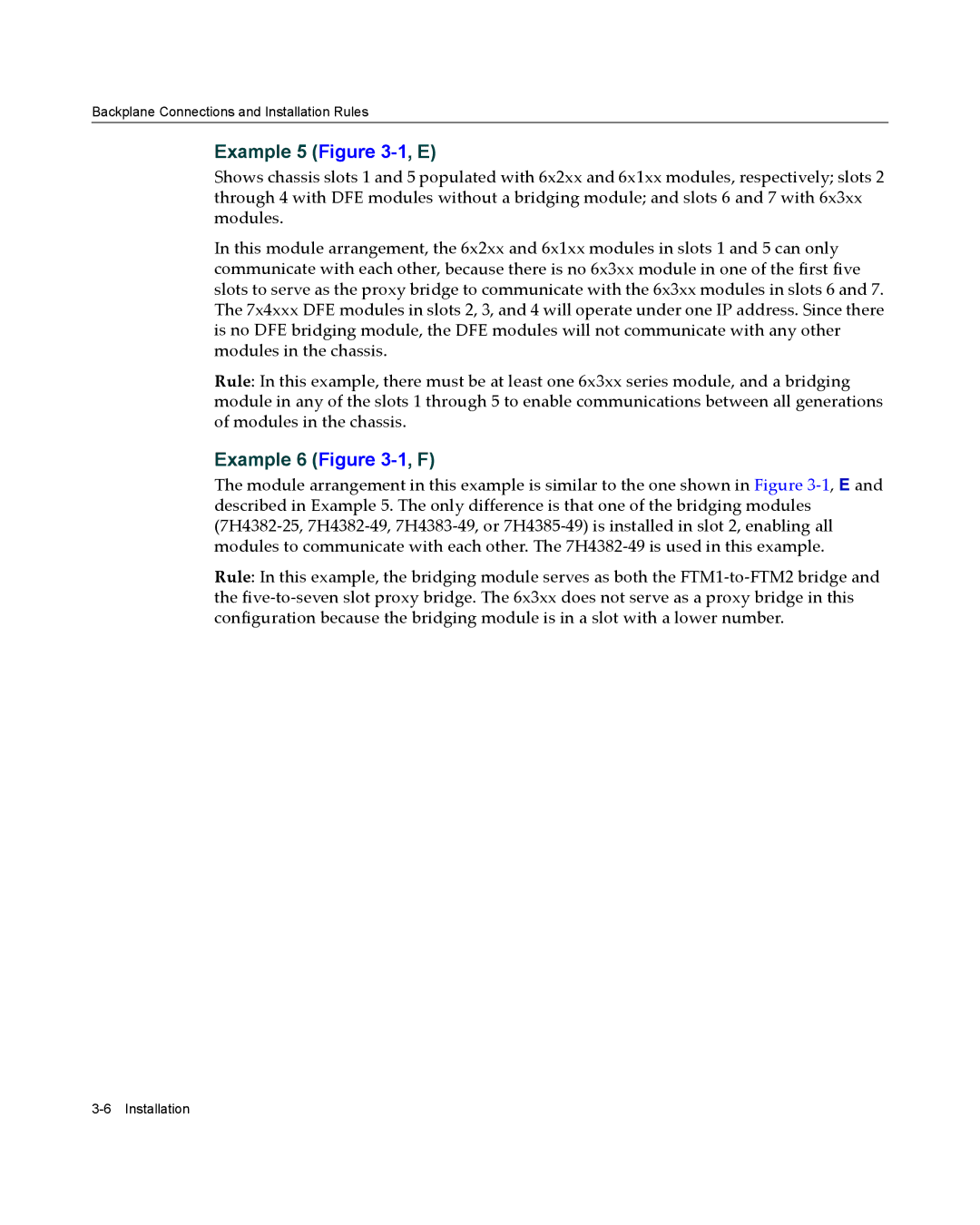Backplane Connections and Installation Rules
Example 5 (Figure 3-1, E)
Shows chassis slots 1 and 5 populated with 6x2xx and 6x1xx modules, respectively; slots 2 through 4 with DFE modules without a bridging module; and slots 6 and 7 with 6x3xx modules.
In this module arrangement, the 6x2xx and 6x1xx modules in slots 1 and 5 can only communicate with each other, because there is no 6x3xx module in one of the first five slots to serve as the proxy bridge to communicate with the 6x3xx modules in slots 6 and 7. The 7x4xxx DFE modules in slots 2, 3, and 4 will operate under one IP address. Since there is no DFE bridging module, the DFE modules will not communicate with any other modules in the chassis.
Rule: In this example, there must be at least one 6x3xx series module, and a bridging module in any of the slots 1 through 5 to enable communications between all generations of modules in the chassis.
Example 6 (Figure 3-1, F)
The module arrangement in this example is similar to the one shown in Figure 3‐1, E and described in Example 5. The only difference is that one of the bridging modules
(7H4382‐25, 7H4382‐49, 7H4383‐49, or 7H4385‐49) is installed in slot 2, enabling all modules to communicate with each other. The 7H4382‐49 is used in this example.
Rule: In this example, the bridging module serves as both the FTM1‐to‐FTM2 bridge and the five‐to‐seven slot proxy bridge. The 6x3xx does not serve as a proxy bridge in this configuration because the bridging module is in a slot with a lower number.
